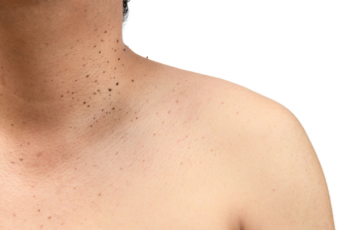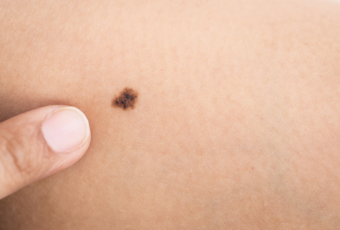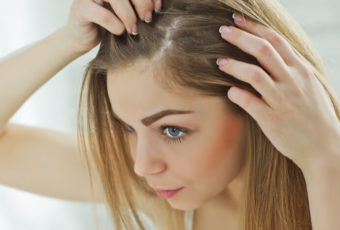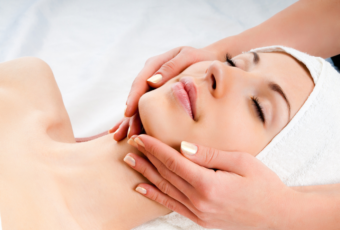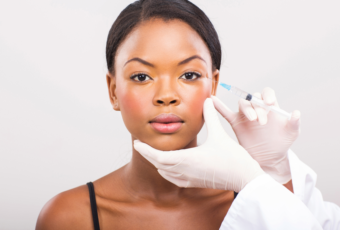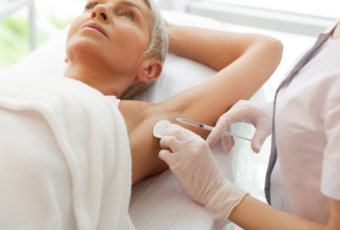Skin tags are more than a nuisance. They can be unattractive, they can get caught on jewelry or clothing, and when it comes down to it, they’re completely unnecessary. If you’re one of the millions of Americans who deal with these skin nuisances every single day, the good news is, you don’t have to. At Vibrant Dermatology & Skinbar MD in Dedham MA, we offer different removal methods to help you get rid of these skin anomalies permanently.
What Are Skin Tags?
Skin tags are benign, raised fleshy bumps that form on the surface of the skin. They’re primarily made up of fat cells, tissue, and collagen fibers. Some of these tags even have their own blood vessels and nerve endings, which explains how they can cause pain when scratched or scraped. In layman’s terms, they are just skin tags, but in medical terms, they are called:
- Acrochordons
- Fibroepithelialpolys
- Soft fibromas
Where Do They Form?
Skin tags can appear anywhere on the body, but they are most commonly found in areas with high friction including the underarms, the groin, the eyelids, the neck, and other skin folds on the body. Areas of the body where the skin rubs back-and-forth against other skin or even an article of jewelry or clothing create the perfect environment for their formation.
At first, they can appear as small flesh-colored bumps that blend into your skin, but they can darken over time. Some tags that form on the skin are painless, while others can grow in size. They can cause discomfort, irritation, and can even bleed when irritated by clothing or jewelry.
What Causes Them To Form?
Tags that form on the skin don’t seem to have a preference. Many studies have been performed in an attempt to determine if certain factors affect their formation, but have only lead to theories as to who gets skin tags and why. Even still, the cause of skin tags is unknown. Some factors that play a role in their formation include:
- Obesity
- Pregnancy
- Hormonal changes
- Type 2 diabetes
- Genetics
- A family history of skin tags
Children don’t usually develop them, but both men and women can experience these tags at any age. The most common occurrence is seen after the age of 50. While there is no way to prevent their formation, there is a way to remove them, and we can help you do just that.
Are They Problematic?
We’ve been taught to take notice of, inspect, and worry about any kind of new skin growth, and for a good reason. However, skin tags are completely benign. They can cause discomfort and pain when irritated, but as far as cancer or other health risks are concerned, they’re harmless.
Many people choose to have them removed because they don’t like how they look, they don’t look like how they feel, or they’ve gotten to a point where they interfere with their daily life. If you think that your particular tag doesn’t look or feel normal, you should seek out a professional opinion to put your mind at ease. The removal process is quick and efficient and won’t cause you any discomfort or inconvenience.
Can You Prevent Them?
As of now, there’s no known way to prevent the formation of skin tags, but there are ways to prevent them from getting worse. If you have tags that have formed on your skin and they are bothering you, there are some steps that you can take to reduce the friction in the area. This will not only prevent them from causing you annoyance but can also help prevent new ones from forming. You can:
- Avoid clothing and jewelry that gets caught on your skin tag
- Pay attention to areas of your body that are prone to these tags
- Reduce the overall friction in such to prevent the formation of new ones.
The benefit of removing these benign growths is that once they’re gone, they’re gone for good. However, high friction areas are high friction areas and you may develop new ones in the same area where you had one removed. Some experts swear by a healthy diet, plenty of water, and blood sugar regulation as an effective way to help reduce skin tag formation. If none of these things work for you, you can rest assured knowing that we can remove these tags easily.
How Do I Get Rid of Them?
Most people choose to remove these tags simply because they are bothersome. Others choose to remove them simply for cosmetic reasons because they don’t like how they look. Still, other patients choose to remove these tags due to discomfort. Their tags are located in a spot that experiences constant irritation because of clothing, jewelry, or friction.
When you choose an in-office treatment to remove these tags, you can rest assured that it will be quick, painless, and effective.
Can I Remove Them Myself?
We live in a world of DIY. If you don’t have to schedule an appointment for something, then you don’t. If there’s a quick and easy do-it-yourself method that saves you time and money, you’ll at least try it. There are endless sources online that will tell you that you can easily remove these tags from the comfort of your own home in a quick, safe, and cost-effective manner.
From electronic devices to apple cider vinegar concoctions, the methods are endless. However, most if not all of them are not very effective. Your best, safest, most effective option for skin tag removal is in a dermatologist’s office.
Strangulation
One at-home method for removing these tags is called strangulation. This method involves tying dental floss around the base of the tag. Doing so cuts off circulation and blood flow to the tag. As a result, the tissue dies and the tag falls off. Many people have attempted this DIY method to remove the tags of skin from their bodies.
While this method could prove to be technically effective, it also poses different risks including irritation and infection. Dermatologists don’t usually recommend this at-home method of removal. If something goes wrong, you may not be equipped to properly care for your skin and deal with any pain or side effects that result and may end up scheduling the dermatologist’s appointment that you were trying to avoid.
Freezing Products
Some DIY tag removal products promise to provide effective results through at-home cryotherapy. While these products may potentially give you your desired outcome, they may not do it safely. Whether it’s a device or a topical product, you should always consult with your dermatologist before buying one of these products on a whim.
Dermatologists have seen it all. They’re experienced and they know what does and doesn’t work. They can give you advice that just might save you time, money, discomfort, and even possible scarring.
Your Best Option: In-Office Removal
The safest most effective way to remove your tag is to let an expert handle it. An in-office removal is the best way to treat these tags that form on your skin because all you have to do is show up. You won’t have to worry about removing the tag yourself but you can walk into your appointment with confidence knowing that when you walk out, your tag will be gone.
At our office, our experts are ready and equipped to safely and effectively remove your tag, regardless of its size or location. You’ll get the best results when you let an expert care for your skin, and that’s exactly what you’ll find at our office. We offer many different removal methods and will determine the best one for you and your individual needs.
What Does In-Office Removal Look Like?
When you choose a dermatologist to remove your tag, you can rest assured that not only will you get the best care, but your concerns will be resolved and your tag will be gone. We’ll determine your treatment plan based on how many skin tags you want to remove, their size, their location, and your individual needs. The most common methods of removal include:
- Freezing them off
- Burning them off
- Snipping them off
Freezing
If your tag is small you may benefit from a professional removal process known as cryotherapy that involves freezing the tag off of your body. This process is different from the DIY at-home freezing methods because it is a professional method performed by an expert in a sterile office setting. Before treatment, your dermatologist will clean the treatment area and then begin the freezing process.
He will apply a controlled amount of liquid nitrogen to your skin tag, which will kill the tissue through cryotherapy. After 10 to 14 days, the tag will fall off and it will be gone for good.
Snipping
Another way to remove these tags that form on the skin is through a process called snipping, which in technical terms is called excision. Before treatment, your dermatologist will clean the skin surrounding your tag and then numb the area with a local pain killer so that you will so remain comfortable for the duration of the treatment.
The dermatologist will then use a scalpel or sharp medical grade, sterile scissors to remove the tag. The benefit of this method is that the scab will form, it will protect the skin and help it to heal without risk of infection.
Burning
It may sound barbaric, but we promise it’s not; it’s actually one of the most popular removal methods. Burning, also known as electrocautery, is another method of skin tag removal that effectively removes the tags on your skin for good. Before your treatment, your dermatologist will clean the treatment area and then use a probe or needle that emits electrical current. This method dries out the tag, and eventually, it will fall off.
Which Method Is Right for Me?
The best method of skin tag removal varies from patient to patient. During your initial consultation, one of our experienced dermatologists will help determine which of these methods is right for your needs. They will examine your skin tag and take note of important characteristics including its size and location. Then, they will review the different methods of removal and proceed accordingly. You can rest assured that we will choose the best removal method for your needs.
Schedule Your Consultation
If you’ve lived with these bothersome, fleshy tags on your skin for years, know that we have different solutions that can help you finally be free of them. A very minor treatment can make a big difference in your life. Contact us today at Dermatology & Skinbar MD in Dedham to schedule your initial consultation and to learn more about what we offer, including SkinBar MD treatments, aesthetics, acne and rosacea treatments, facials, skin rejuvenation, and dermal fillers.

